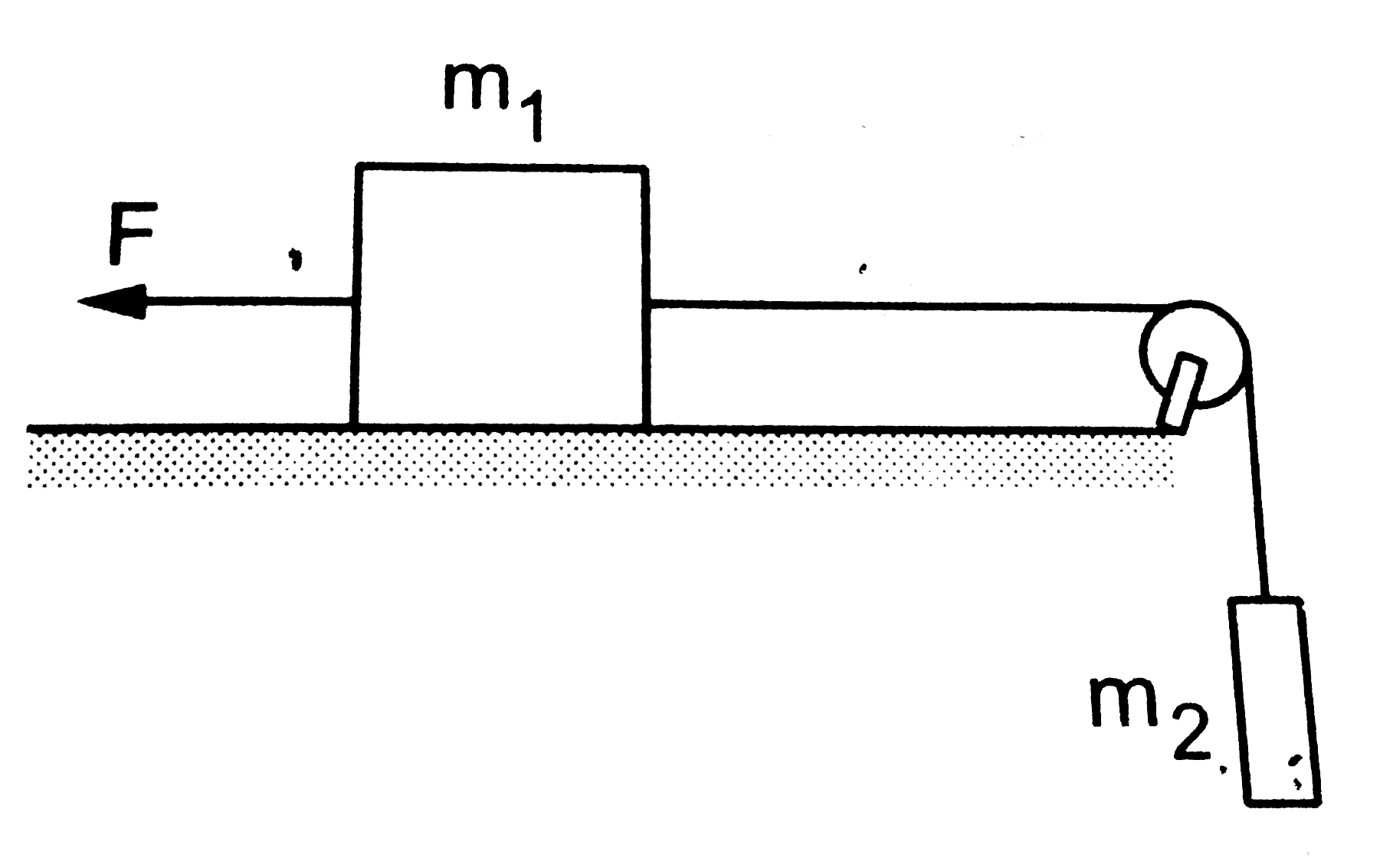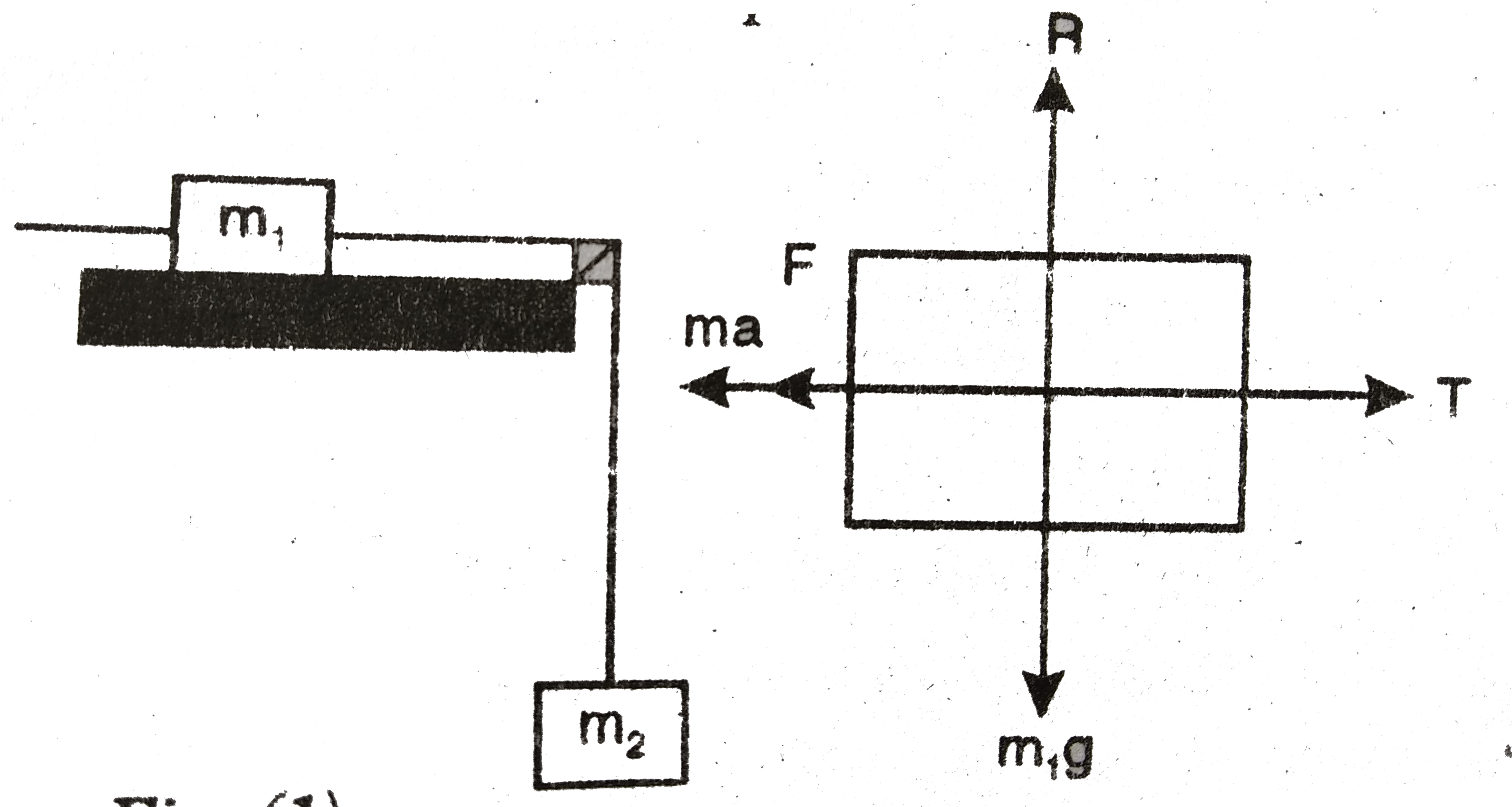In figure m1=5kg,m2=2kgandF=1N. Find the acceleration of either block. .
 Solution in Gujrati
Solution in Gujrati
From the free body diagram (. ) we have
m1a+F−T=−
→T=m1a+F

From the free body diagram (. 2)
m2a+T−m2g=0
→m2a+m1+F−m2g=0 (from i.)
→a(m1+m2)+m2g2−m2g=0
[∵F=m2g2]
→a(m1+m2)=m2g2
→Ae≤rationofmass,<br>a= (m_2g)/(2(m_1+m_2)) towards right.
Similar Questions
Two blocks of masses m1 and m2(m1>m2) in contact with each other on frictionless, horizontal surface. If a horizontal force F is given onm1 set into motion with acceleration a, then reaction force on mass m1 by m2 is
View SolutionIf m1=10kg,m2=4kgandm3=2kg the tension in the string connecting m1andm2 is ,

View SolutionIn the arrangement shown in the figure all surfaces are frictionless, the masses of the block are m1=20kgandm2=30kg. The accelerations of masses m1andm2 will be if F = 180N.

View SolutionThree blocks of masses m1,m2andm3 are connected as shown in the figure. All the surfaces are frictionless and the string and the pulleys are light. Find the acceleration of m1

View SolutionIn figure m1=5kg,m2=2kgandF=1N. Find the acceleration of either block. Describe the motion of m1 if the string breaks but F continues to act.

View SolutionIn figure assume that there is nagligible friction between the blocks and table. Compute the tension in the cord connecting m2 and the pulley and acceleration of m2if m1=300g, m2=200g and F=0.40N

View SolutionThree blocks of masses m1,m2and m3kg are placed in contact with each other on a frictionless table. A force is applied on the heaviest mass m1, the acceleration of m3 will be:
View Solution
Two blocks are placed at rest on a smooth fixed inclined place. A force F acts on block of mass m1 and is parallel to the inclined plane as shown in figure. Both blocks move up the incline. Then
(i) Draw free body diagram blocks of mass m1 and blocks mass m2
(ii) Find acceleration of blocks of mass m1 and blocks mass m2
(iii) Find normal reaction between the blocks of mass m1 and m2
View Solution
